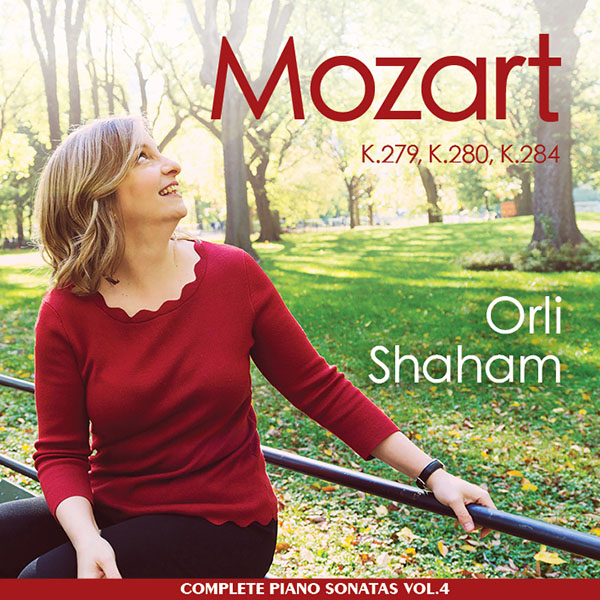
Mozart Piano Sonatas, Vol. 4
Mozart didn’t start out a household name. As a young musician, he traveled widely and — like any good traveling salesman — needed samples to show off to prospective patrons. So, during a journey to Munich in 1774–1775, he wrote six “calling cards” to play at the homes of potential benefactors. Three of these calling cards — the sonatas K. 280, K. 279, and K. 284 — form this disc.
Mozart Piano Sonatas, Vol. 4
Mozart didn’t start out a household name. As a young musician, he traveled widely and — like any good traveling salesman — needed samples to show off to prospective patrons. So, during a journey to Munich in 1774–1775, he wrote six “calling cards” to play at the homes of potential benefactors. Three of these calling cards — the sonatas K. 280, K. 279, and K. 284 — form this disc.
Click the image below to read the liner notes.
Liner notes
Eighteenth-century calling cards
Orli Shaham and Peter Dahm Robertson
Mozart didn’t start out a household name. As a young musician, he traveled widely and — like any good traveling salesman — needed samples to show off to prospective patrons. So, during a journey to Munich in 1774–1775, he wrote six “calling cards” to play at the homes of potential benefactors. Three of these calling cards — the sonatas K. 280, K. 279, and K. 284 — form this disc.
A calling card is meant to leave an impression: in Mozart’s case, an impression of what he could do with ten fingers, a few keys, and a musical mind. (Just before the sonatas’ publication, he wrote to his father that he was not hoping to profit financially — they would open doors in other ways.) Apparently he was pleased with the result —seeking patrons again on a tour to Mannheim and Paris several years later, he played the same sonatas.
What Mozart could do was in many ways the cutting edge of composition and keyboard technique. He was an early adopter of technology, writing for newly invented instruments and experimenting with any innovation that could be used to artistic effect. (In another letter to his father, he wrote excitedly about a knee-operated lever that allowed the pianist to dampen the tone of the instrument.) Even on a standard keyboard, he never stopped exploring: How many different kinds of sounds — rich and plaintive, loud and soft, long and short, question and answer, excitement and heartbreak — can I make on this keyboard? Can I make a piece sound improvised? Can I draw people in with pauses (Sonata in F, K. 280)? Can I write a theme that isn’t really a melody (Sonata in C, K. 279)? Why not try a final movement of variations, instead of a rondo (Sonata in D, K. 284, “Dürnitz”)?
Of course, the audience at these evenings would not have known any of this in advance. They might have expected a standard musician of the time, perhaps a pianist playing a piece with plenty of repetitions to show off all his skill with ornamentation. Instead, they got these calling cards: inventive, surprising, and unconventional, exploring both the literal range of the keyboard and the metaphorical range of the emotions it can conjure. (Centuries later, the musicologist Alfred Einstein would describe the pieces as “a microcosm of feeling and subtlety of form, but a very complicated one.”) The sonatas ask for attention, but so charmingly that giving it is not an imposition. As if the music is saying: “I’m Mozart, pleased to meet you! Who are you?”
For more, visit: orlishaham.com
Recorded on July 21, 2019; August 27, 2019; & Sept. 3, 2020 in Mechanics Hall, Worcester, MA
Recording Producer & Editor: Erica Brenner
Recording Engineers: Michael Bishop (K.279, K.280), Robert Friedrich (K.284)
Mastering Engineer: Robert Friedrich
Orli Shaham is a Steinway Artist